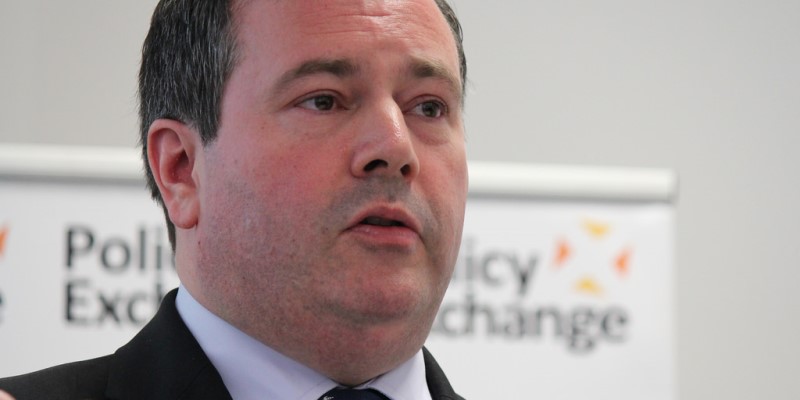Spending reductions in the 1990s dwarf Kenney’s budget plans

The Kenney government’s first budget, tabled in the fall, has attracted more attention and commentary than most provincial budgets. Critics predict harmful economic effects due to the planned spending reductions in what they call an “austerity budget.”
But a brief review of Canada’s recent fiscal past provides some valuable historical context. First, let’s look at Kenney’s spending plan.
The first Kenney budget calls for program spending (all operating expenditures excluding government debt interest) reductions totalling 1.6 per cent over four years, before eliminating the budget deficit and reaching a small surplus in 2022-23. This is indeed a departure from recent spending activity in Edmonton where nominal program spending has increased over the past four years and large deficits have persisted.
So the budget does mark a change in course. A longer historical perspective, however, suggests the spending reductions in the budget are mild compared to past deficit-elimination efforts, particularly during the 1990s.
Let’s start with Alberta’s own history. During the 1990s, Premier Ralph Klein’s government reduced program spending by 21.6 per cent over three years—that’s right, 21.6 per cent. These reductions quickly eliminated a deficit far larger than Alberta faces today.
And spending reductions in the 1990s were not the exclusive purview of Conservative governments. In Ottawa, Jean Chrétien’s Liberal government reduced program spending by 9.7 per cent over two years, as spelled out in the 1995 Budget, which called for a comprehensive program review with the explicit goal of reducing and prioritizing spending. Chrétien eliminated the deficit by 1997 and the federal government maintained a decade of uninterrupted balanced budgets while delivering pro-growth tax relief.
Finally, the ’90s NDP government of Roy Romanow in Saskatchewan reduced spending by 11.1 per cent over three years, eliminating a substantial deficit. This reduction in spending helped bring the province back from the brink of insolvency and laid the foundation for a lengthy period of prosperity.
These examples show there’s nothing unprecedented about the spending reductions planned for Alberta. In fact, the Kenney government’s plan—to eliminate a smaller deficit over a longer time horizon (again, four years) by reducing spending by 1.6 per cent—is mild compared to the Klein, Chretien and Romanow plans.
During the 1990s, opponents of these plans warned (as some do today in Alberta) that the spending reductions would trigger a recession. But in reality, all three jurisdictions prospered in subsequent years.
Ultimately, “austerity” is in the eye of the beholder, and debates about whether it should be applied to Alberta’s recent budget boil down to semantics. A better approach is to look at similar or larger spending reductions from the past and analyze what happened when they were implemented. Clearly, when compared to recent plans by other governments in Alberta and across Canada, the Kenney government’s planned spending reductions are markedly mild.
Authors:
Subscribe to the Fraser Institute
Get the latest news from the Fraser Institute on the latest research studies, news and events.


